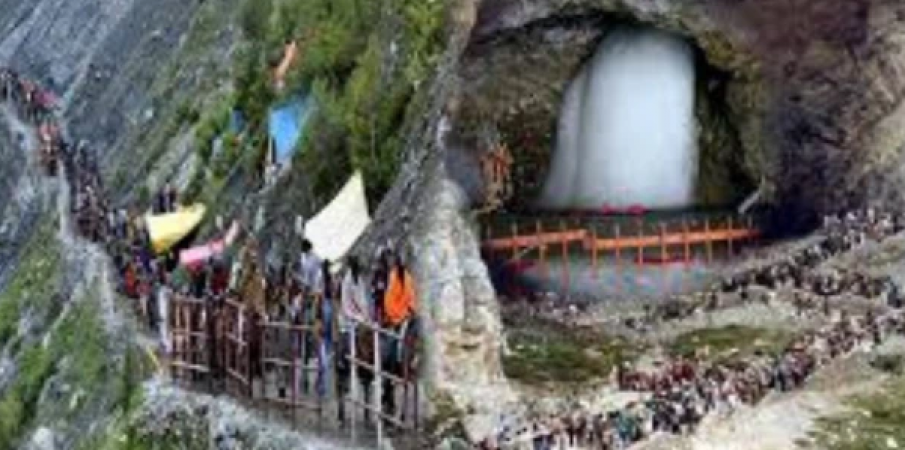
The Amarnath Temple holds immense religious and historical significance for millions of devotees who embark on a spiritual journey to pay homage to Lord Shiva, the Hindu god of destruction and transformation. Nestled in the breathtakingly beautiful region of Jammu and Kashmir in India, the temple is situated at an altitude of 3,880 meters (12,730 feet) in the Himalayan ranges. This article delves into the captivating history of the Amarnath Cave and provides insights into the sacred rituals and worship practices associated with this revered site.
I. The History of Amarnath:
A. Ancient Origins:
Mythological Legends: Discover the fascinating legends associated with the Amarnath Cave, including its mention in ancient Hindu scriptures such as the Mahabharata and the Puranas.
Discovery of the Holy Cave: Uncover the historical account of the cave's discovery by a Muslim shepherd named Buta Malik and its subsequent recognition as a sacred Hindu pilgrimage site.
B. The Journey of Faith:
Historical Pilgrimage: Trace the historical pilgrimage to the Amarnath Cave, which dates back thousands of years, with mentions in ancient texts and accounts of early explorers.
Rise in Popularity: Explore how the Amarnath Yatra, the annual pilgrimage to the temple, gained momentum over time and became one of the most revered and challenging religious journeys in the world.
II. The Amarnath Temple and Its Significance:
A. Architectural Marvel:
Cave Structure: Describe the natural formation of the Amarnath Cave and its unique stalagmite formation, which is believed to represent Lord Shiva in his lingam form.
Temple Complex: Highlight the architecture and layout of the modern-day Amarnath Temple complex, including the main shrine, smaller shrines, and other structures.
B. Spiritual Significance:
Lord Shiva's Abode: Explore the spiritual significance of the Amarnath Cave as the sacred abode of Lord Shiva and its association with various mythological events and divine manifestations.
Symbolism and Beliefs: Discuss the symbolic interpretations and beliefs associated with the Amarnath Cave and how they deepen the devotees' spiritual experience.
III. Worship Practices at Amarnath Temple:
A. Preparation for the Pilgrimage:
Registration and Permits: Explain the registration process and the importance of obtaining permits to undertake the Amarnath Yatra, considering the challenging terrain and limited infrastructure.
Physical Fitness and Acclimatization: Provide insights into the physical fitness requirements and the acclimatization process necessary for a safe and successful pilgrimage.
B. Rituals and Customs:
Traditional Practices: Explore the rituals performed by devotees at the Amarnath Temple, including the symbolic offerings of water, milk, and other sacred substances to the naturally formed lingam.
Aarti and Prayers: Detail the daily aarti (ritualistic worship) and prayers conducted at the temple, enhancing the spiritual ambiance and fostering a deep sense of devotion.
C. Spiritual Experiences and Legends:
Visions and Miracles: Share accounts of devotees' spiritual experiences, visions, and miracles associated with their visit to the Amarnath Cave, showcasing the profound impact of the pilgrimage.
Stories and Legends: Narrate intriguing stories and legends passed down through generations that illustrate the divine presence and the power of faith at the Amarnath Temple.
The Amarnath Temple stands as a testament to the enduring faith and spiritual devotion of millions of pilgrims who undertake the challenging journey to seek the blessings of Lord Shiva. Through its rich history, architectural marvels, and sacred worship practices, the temple continues to inspire and captivate the hearts of devotees. The Amarnath Yatra, with its unique blend of physical exertion and spiritual awakening, offers an unparalleled experience that resonates with people from all walks of life, reaffirming the power of faith and the transcendence of the divine.
Sawan Adhika Maas Starts on July 18, 2023
The Moche Civilization: Unveiling Peru's Intricate Pottery and Art
Why should non-vegetarian food should not be eaten in the month of Sawan?